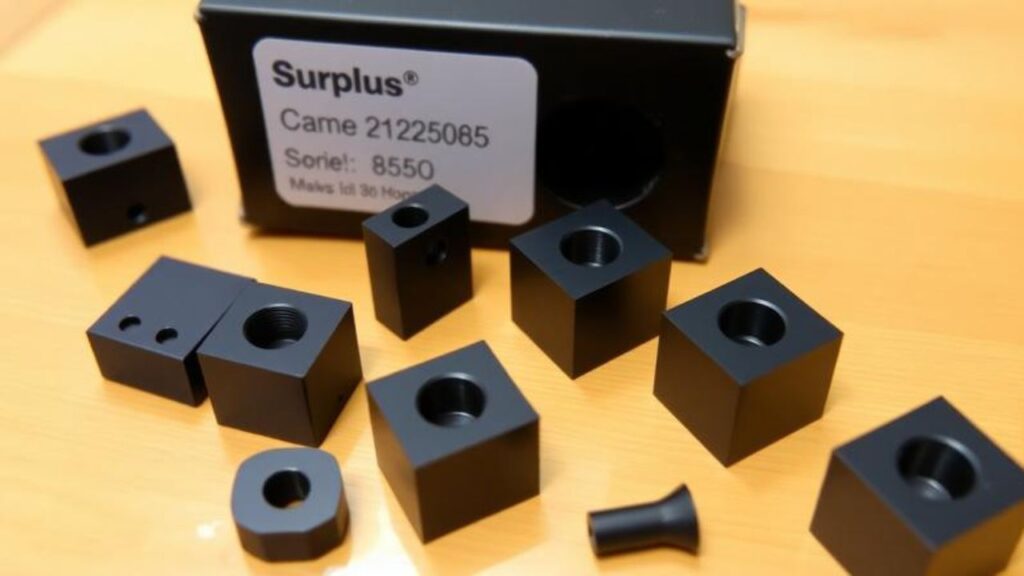In today’s competitive manufacturing environment, finding ways to reduce tooling costs without compromising productivity is a constant challenge. One often-overlooked opportunity is leveraging surplus carbide inserts. At VB Industrial Supply, we specialize in providing high-quality new, used and surplus industrial components—including carbide inserts—so you can maintain performance and cut costs smartly.
What Are Carbide Inserts — and Why Surplus Matters
Carbide inserts are precision-engineered cutting components used in turning, milling, drilling and other machining operations. They are valued for their hardness, wear-resistance, and ability to maintain cutting geometry under demanding conditions. Because tooling budgets are tight and downtime expensive, many plants accumulate stock of carbide inserts that are seldom used—or perhaps were purchased for jobs that never materialized. These become surplus inventory.
Rather than letting these assets sit idle, treating them as surplus can yield major benefits:
- Cost reduction: Surplus inserts often cost significantly less than brand-new OEM stock.
- Availability: Immediate access to hard-to-find geometries or grades that may be obsolete from the original manufacturer.
- Sustainability: Re-using surplus inserts supports a circular-economy mindset and keeps usable tooling in production rather than scrap.
How to Evaluate Surplus Carbide Inserts for Quality & Fit
Not all surplus tooling is created equal. Here’s a checklist to help you assess whether the surplus carbide inserts you’re sourcing are fit for your production line:
- Check material grade and coating – Know exactly what carbide grade and coating (e.g., CVD, PVD) the insert is. Match it to your material, cutting speed, and application demands.
- Inspect geometry and size – Ensure that the insert’s size, grade and geometry (e.g., CNMG, SNMG, etc) match the toolholder and the machining operation. Surplus stock often includes a wide variety of geometries—make sure you verify.
- Verify lot-age and storage condition – Even unused inserts degrade over long time frames if stored in humid or un-controlled environments. Inspect for oxidation, chipped edges or packaging damage.
- Confirm compatibility with holder and machine – Many old inserts may no longer be supported by the latest toolholders or tool-changer systems. Always test fit and clamp-fit.
- Evaluate cost-benefit vs. brand new – The price advantage is real, but weigh the risk of scrap parts or rework if the surplus insert fails prematurely.
Best Practices for Buying Surplus Carbide Inserts
When sourcing from a provider like VB Industrial Supply, consider the following best practices to get maximum value:
- Buy for your actual needs, not just because the price is low. Having a surplus insert that doesn’t match your holder or operation becomes true surplus again.
- Build a catalog of acceptable grades and geometries ahead of time. That way when surplus stock appears you can act quickly.
- Maintain good inventory control and labeling. Even surplus inserts should be stored in controlled conditions, clearly labeled as “surplus stock” but ready for production use.
- Keep metrics on performance. Once surplus inserts are in use, track their performance (tool life, part quality, scrap rate) and compare with brand-new inserts. This helps refine future surplus buying decisions.
- Choose a supplier with transparent inventory and testing standards. At VB Industrial Supply, we inspect, test when possible, and clearly identify surplus or used stock so you know what you’re buying.
Why VB Industrial Supply Is a Solid Partner for Surplus Tooling
At VB Industrial Supply, our business model centres on asset recovery, surplus sourcing and fast shipping. We serve maintenance, production and procurement teams who need reliable access to industrial components—new, surplus and used.
- Our inventory spans categories from tooling & tools to power transmission, instrumentation and electrical.
- We emphasise quality and service — inspecting parts, providing clear condition descriptions and offering global shipping.
- Because we are not an authorised distributor for every manufacturer (unless stated), we can offer surplus and legacy tooling at competitive pricing, especially items that OEMs no longer stock.
This makes us a strong choice for sourcing surplus carbide inserts that meet your needs while controlling cost.
How to Get Started
If you’re looking to incorporate surplus carbide inserts into your tooling strategy, here’s how to begin with VB Industrial Supply:
- Identify the insert types and grades you use most frequently (e.g., SNMG 432, CNMG 1204, etc).
- Contact us with your SKU or geometry requirements—tell us you’re looking for “surplus carbide inserts.”
- Review available inventory—we’ll provide condition, age, and price details.
- Place your order—we ship globally and offer transparent pricing.
- Track usage and performance—once the inserts are in use, track tool life vs cost savings and feed that back into your procurement strategy.
Conclusion
Surplus carbide inserts present a savvy opportunity for manufacturing and maintenance teams to optimise tooling budgets, improve availability and support a more sustainable supply chain. When handled correctly—with proper evaluation, storage and supplier partnership—they deliver both performance and cost benefits.
At VB Industrial Supply, we’re here to support your surplus tooling strategy with transparent inventory, quality service and global reach. If you’re ready to explore surplus carbide inserts or other tooling & tools solutions, reach out today and let us help you turn surplus into value.



